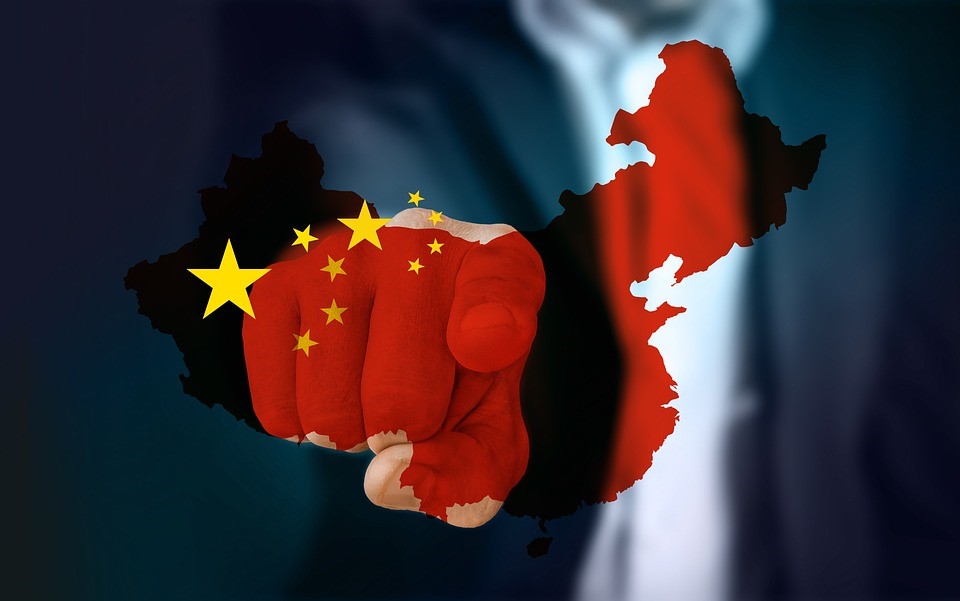China is not finished despite reports that President Xi Jinping is backing off his geopolitical plans to overtake the United States’ economy. Analysts from the IC favoring a softer US stance on the communist regime suggest that this means China is less of a threat now. Dan Blumenthal and Derick Scissors, both senior fellows at AEI writing in Atlantic, say they disagree. They point out that “The United States is in danger of missing a profound change in the economic component of China’s geopolitical strategy.” Although Xi has downgraded the Communist Party’s ambition to overtake the US in economic size, his priority, Blumenthal and Scissors argue, is to minimize China’s dependence on other countries and maximize its ability to coerce them economically.
In reality it is an indication that China is backing down from its immediate plans, however, that doesn’t lessen the long-term planning coming out of Beijing. It represents a readjustment to Xi’s strategy. The United States was complacent toward the future threat over four decades ago, in 1979, when Washington agreed to open relations with China. President Clinton followed that opening in 2001, by giving China permanent Most Favored Nation (MFN) status, a trade advantage Beijing still holds today despite its lack of progress in opening its economy. Today, the West faces a very different country. It is one capable of, and has used, its economic strength as a strategic weapon to damage other states and coerce countries into supporting the interests of the communist state. The United States, Blumenthal and Scissors says, must “respond to a China bent on long-term economic coercion to secure the interests of the Communist party and the Chinese nation.”
They suggest Washington must begin in 2023 by gaining a better understanding of Xi Jinping and his long-term goals. Internationally, they add, the US must convince its partners and allies that limiting their reliance on the communist giant is the most prudent path to curtailing China’s aggressive behavior abroad. President Xi, in one of his first speeches hinting at his new approach, said in 2020 that the “powerful gravitational field” of the state-controlled Chinese market can be used to reshape supply chains in Beijing’s favor. Xi views this as the “great struggle” between east and west, between capitalism and communism. His goal is to stop the West from limiting China’s technological advancement. China continues to steal, conduct coercive technology transfer and reverse engineer intellectual property obtained from the West.
During the last eight years, Xi’s “Made in China 2025” industrial plan has supplied sweeping government assistance to the Chinese semiconductor industry and electric vehicles. President Xi appears in 2023 to be redoubling the communist giant’s efforts to tilt economic leverage in its favor in response to western efforts to hold China and the CCP accountable for their actions. “Xi may see the decoupling of the two countries’ economies as ultimately inevitable—and may now be actively advancing it, on his preferred terms,” according to Blumenthal and Scissors.
At times the intelligence community (IC) in Washington underestimates the domestic political problems inside China. For Xi, a thriving private sector risks powerful constituencies developing outside party control. The result is increased repression and expanded domestic surveillance programs. China’s politicians don’t like Luan, or chaos. They want order and loyalty to the CCP and its leadership. Blumenthal and Scissors argue that with the party determined to retain control of the economy, potentially productive industries face many barriers to expansion. They say “In their place are sectors that serve the party’s interests first. This is not conducive to innovation and scientific breakthrough and, along with deteriorating demographics and high debt, will continue to limit growth.” Washington is at risk of misreading the signs and assuming China has given up on it geopolitical plans. What has changed is how it will go about doing it. Xi will use state-shaped technological development and its preeminent position in global supply chains. “China will be neither the world’s low-tech factory nor its leading tech pioneer, but will aim instead to make itself indispensable as a producer of high-value goods upon which even its adversaries depend. This is a perceptive and potentially fruitful alternative to rapid economic growth,” say Blumenthal and Scissors.
China hopes to kill off foreign competition by absorbing foreign innovation and then eventually drive foreign producers out of business. “The dominant feature of the Sino-American commercial competition will not be a race based on economic growth or on technological advancement, as many anticipate. Rather, through subsidies, coercive technology transfer, and unbalanced market access, inferior Chinese firms will win market share at the expense of more dynamic competitors,” notes Blumenthal and Scissors. Heavy spending on science and technology and a focus on strategic economic leveraging, combined with manufacturing prowess, a very large domestic market, and coercion as a tool, will enable China to insulate itself from Western sanctions and rules.
If American policy makers and the private sector want to avoid this fate, it must be willing to challenge China’s bid on supply chains. With a challenge, there will be a further shift patterns of production and trade in its favor. The nature of the economic challenge has changed. Now American must respond while it can offset China’s attempts to remake the world economic order.
Daria Novak served in the U.S. State Dept.
